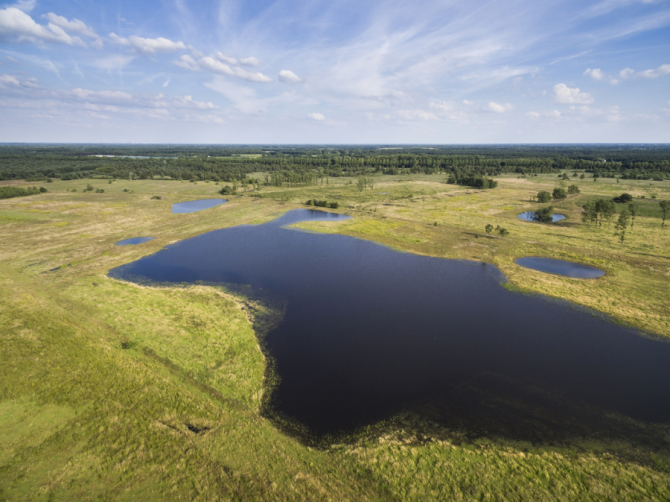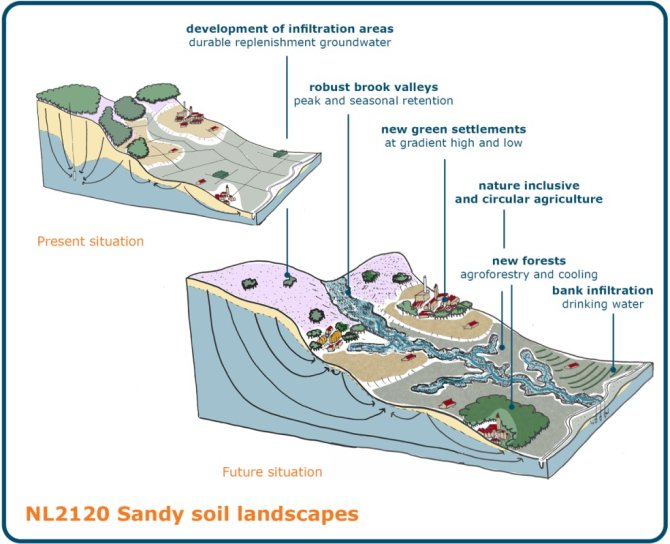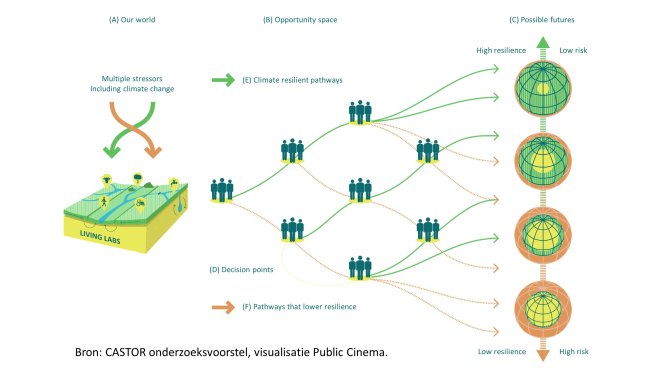
News
More natural, healthier, sandy soils, it can be done!
The Dutch sandy landscape is not doing well. Sandy soils are under pressure from all sides. We use the soils for agriculture and industry, our drinking water supply, and housing and leisure. Climate change adds to the already high pressure. If we want all these purposes to continue sustainably, we must intervene. We must create a landscape with room for natural processes. We must utilise these processes based on the latest scientific insights and supported by 21st-century technology.
The main question is how precisely that may be achieved. A large number of parties must reach a consensus on this issue. A multi-disciplinary team led by Jakob Wallinga, chair holder at the Soil Geography and Landscape group, is to develop a future perspective substantiated by science and based on extensive (field) research.
The team is made up of experts from Wageningen University & Research, Radboud University (Nijmegen), HAS Hogeschool (Den Bosch), the Vrije Universiteit (Amsterdam) and Cologne University. Their project proposal NAT: NATure-based approach for climate robust, sustainable and valuable sandy landscapes was recently accepted by the Dutch Research Council (NWO), enabling them to start their work.
The natural landscape as a point of departure
The project is based on a naturally functioning landscape. In the course of recent centuries, humans have adapted the soil and landscape to accommodate intensive use thereof. Consider, for example, drainage ditches, artificial fertilisers to increase the soil’s fertility, sprinklers in times of drought. Team Wallinga proposes reversing this trend: instead of adapting the soil and landscape to the desired use, adapting the use to the possibilities the soil and landscape offer. A great idea, but how can this be done? Is it economically feasible, and will society accept it? In other words: can we live with and off a natural landscape? Will farmers still have sufficient earning capacity, and will enough room remain for all our activities?

Societal transition
Through their expected reach and impact, the measures require a societal transition. Wallinga: ‘Changes in the landscape depend on the participation and support of many parties, among whom are landowners and the general public. This aspect is explicitly included in our project, in which we design paths of development towards nature-based landscapes with stakeholders.’ Collaboration is key. And that is precisely what the team intends to do, with in excess of twenty project partners, including provincial governments, water management agencies, farmers, water companies and a large Dutch bank. Wallinga: ‘Luckily, the partners are willing to collaborate. There is a collective awareness that something must be done if we are to keep our country inhabitable.’
Landscape transformation is expected to lead to new earning options. Landowners may be able to make a profit from water infiltration or by increasing the levels of organic substances in the soil. Farmers may grow crops that require wet(ter) conditions. Thus, natural processes are utilised, which in turn increases the resilience of the soil and landscape. Wallinga: ‘Prevention offers the best options for improvement. If we do nothing, the economic impact of climate change may be incalculable in the future.’
Living field labs
The team intends to conduct concrete, natural scientific research in so-called living field labs, plots of land measuring ten by ten kilometres. Wallinga: ‘There, we will collaborate with Vitens, for example, to investigate how circular water abstraction affects the availability of water and the quality of soil in the environment. We will also study innovative farming methods such as alternating crops with natural grassland and growing alternative crops that are better adapted to extremes such as drought or flooding.’ Many of these field labs already exist in project partners’ regions such as in Twente/de Achterhoek, Sallandse heuvelrug, De Hondsrug and Kempenbroek (on the border of Brabant, Limburg and Belgium).

The NAT project builds on existing projects, including existing partnerships. These projects also focus on gathering knowledge about climate robust soil and water systems with the intent to implement these.
‘NAT (which means “wet” in Dutch, ed.) is actually a pun,’ says Wallinga. ‘When we started to write our proposal, we had just had three extremely dry summers. While “nat” normally has a negative connotation, it suddenly became a positive word. After this last year and the past few weeks, in particular, opinions may differ. Still, it did not stop the proposal from being accepted.’
First steps towards the end goal
The ultimate goal of the extensive NAT project is to generate climate-robust and valuable nature-based sandy landscapes for the future. It will be a systems approach, with concrete proposals for land reform and development pathways towards this goal. What paths are most feasible and how long they will take is yet unknown, but the first steps have been taken!
